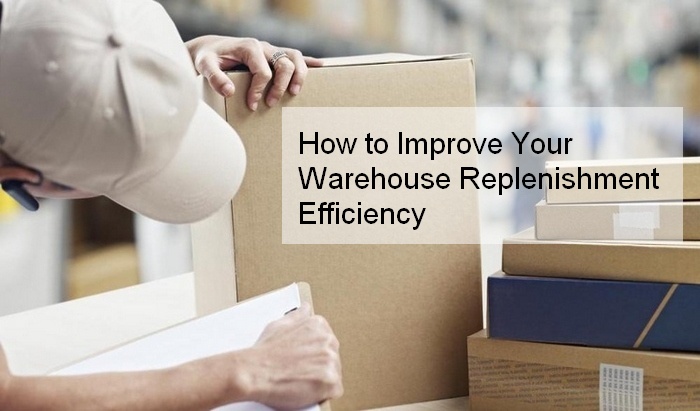
If you are in the business of warehouse management, then you already know that efficiency is your critical metric when it comes to replenishment. After all, it never pays to work harder and not smarter when you are responsible for the safety and effectiveness of your warehouse crew.
As far as improving your overall efficiency though, your primary focus needs to be on monitoring activity in order to determine where and how you can save time and labor while maintaining an impeccable safety record.
The secret to making all of these elements work together for better replenishment efficiency is an effective warehouse management software program that provides an accurate read on where your areas of opportunity are for improving overall efficiency. Here are some tips on improving your replenishment efficiency, as well as some key metrics and typical areas of opportunity.
Make Sure You Have an Efficient Warehouse Management System in Place
Your replenishment efficiency lives and dies by your warehouse management system and how easy it is for your workers to integrate with that system on the warehouse floor. You need a system and devices that allow your workers to accurately track inventory movement as it arrives at intake and when it rolls out for delivery.
Your picking team will be the group that is most impacted by your warehouse management system, so be sure to listen to their feedback and commentary when you are deciding on whether or not your system needs to be improved. Trusting your experienced professionals who are your boots on the ground personnel is essential for staying up to date on what is and isn’t working.
Moreover, it’s just smart business to depend on the opinion of the people who make your warehouse run every day, all day. Working with your picking team to get the right system in place to track metrics and improve performance should be your starting point for improving replenishment efficiency.
Limit Your Target Metrics to 4 or Fewer
Your efficiency and performance metrics that directly affect your replenishment need to be kept to a maximum of 4. Trying to monitor, manage, and adjust 4 operational areas of concern every month is a fairly significant and labor intensive task, and typically most warehouse managers find if they try to improve or control more than 4 at a time, they see improvement in maybe 3 areas with a downturn trend in the other areas of performance.
Focusing on no more than a handful of metrics at a time in your warehouse management software makes it much easier to see results and actually gain ground in overall efficiency, which is the fundamental driving force behind better replenishment efficiency.
Always Determine Your Long Term Metric Goals in Advance
Once you have determined what 3-4 areas of opportunity are going to have the most significant impact on your replenishment, it’s time to set some performance goals to achieve in the months to come. Monitoring accuracy needs to be fundamental to these metric goals, and if you aren’t getting 98% or better on your monthly reports, you need to improve your monitoring system before you can really set goals.
Keep your goals realistic and achievable within the time span you’ve allotted for improvement. Check your fill rates, inventory build up, and on-time deliveries closely, as these are the primary areas of impact when it comes to replenishment efficiency. Your pickers can do their job more effectively when they have accurate feedback on how accurate and efficient they are thanks to monitoring those specific metrics, and an efficient picking team is crucial to increased replenishment efficiency and overall customer satisfaction.
The Improvement Process Never Ends
One concept you need to fully understand and accept is that improved replenishment efficiency is a never ending process. You won’t set up an improvement process and then let the rank-and-file handle the work for you. Consistent regular monitoring of your key metrics is going to be a long term process that extends well beyond the initially establishment of your replenishment efficiency improvement plan.
Setup benchmark dates for performance, and then re-evaluate your goals based on how well your current system is working. Be flexible, and be willing to alter your goals if you aren’t seeing the results you are looking for from your current system.
Additionally, if your processes are working really well and you are hitting those numbers, it is time to assess and reevaluate your goals for improvement. Keep looking forward to the future with renewed optimism regarding your goals as you surpass what you believed was possible and continue to break new ground in replenishment efficiency at your warehouse.
If you are in need of an effective and efficient warehouse management system for improving warehouse replenishment efficiency, consider reaching out to the WMS software experts at Newcastle Systems. Their real world experience combined with their knowledge of efficient and effective warehouse management systems can help you and your team achieve your replenishment efficiency goals. Visit their website or call today to set up a consultation for a WMS solution for your business.
